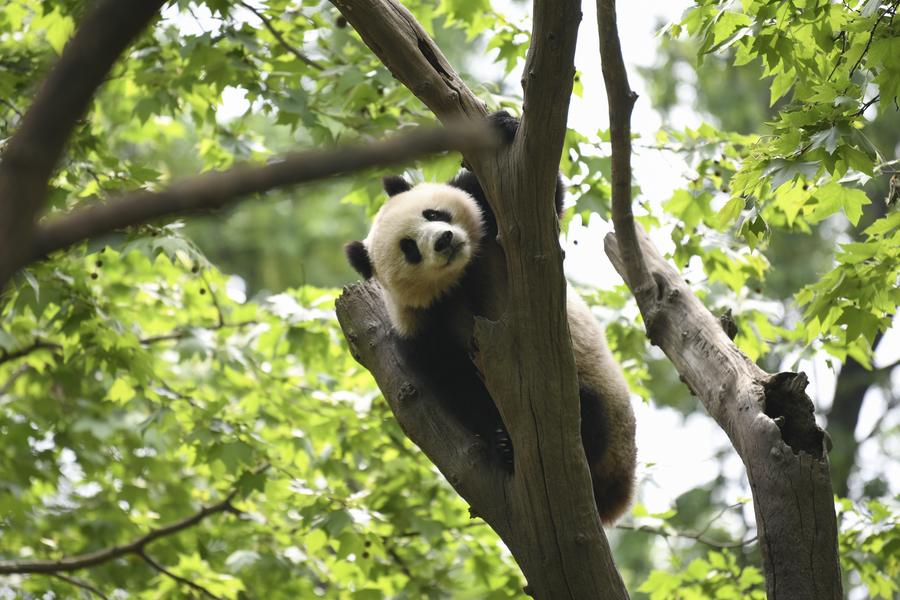China's iconic giant pandas, with their round faces, plump bodies and distinctive coloration, are beloved around the world as cultural symbols and emblems of biodiversity, reflecting the country's remarkable ecological progress.
At the Global Panda Partners 2024 conference in Chengdu, Sichuan Province, China, attention was once again drawn to China's success in panda conservation and its efforts to protect the environment and endangered species.
According to official figures, the population of wild giant pandas has increased from around 1,100 in the 1980s to nearly 1,900. The global captive panda population now stands at 757. The International Union for Conservation of Nature (IUCN) has downgraded the status of the giant panda from "endangered" to "vulnerable".
Sichuan province, where the conference was held, is home to the largest panda habitat in the world. Here, 1,387 wild pandas have been found, an increase of more than 50% from the 1980s.
"But protecting pandas has not been easy. For example, finding the best milk replacer formula for panda cubs required dozens of tests," said a senior expert at the China Center for Conservation and Research on Giant Pandas Li Desheng.
"In the early days, artificial reproduction of giant pandas was a big problem. During the 1980s, we managed to breed only one cub that survived for two years," Li recalled.
However, thanks to technological and scientific advances, artificial breeding has now improved significantly, both in estrus rates and in the survival of panda cubs. The average life expectancy of pandas has also increased, the expert said.
Pandas in China also enjoy enlarged wild habitats. In 2021, China officially declared five national parks, including the National Park for Giant Pandas, which includes parts of Sichuan, Shaanxi and Gansu provinces.

At the opening ceremony of the Global Panda Partners 2024 conference, the head of the National Forest and Rangeland Administration Guan Zhi'ou said the country has established a habitat protection system for giant pandas, focusing on a national park with a total area of 2.58 million hectares. Habitat connectivity and genetic exchange between 85 per cent of the wild giant panda population has also been achieved.
In addition to pandas, China has in recent years strengthened research and international cooperation in the conservation of other endangered species through various measures such as habitat protection, artificial breeding and cultivation, and reintroduction into the wild.
Populations of more than 300 rare and endangered species of wild animals and plants, such as the Siberian tiger and the Hainan gibbon, have achieved steady growth.
During the conference, the former Director-General of UNESCO Irina Bokova said the Chinese leadership has emphasized the relationship between humans and nature and called for efforts to create a community of life for humans and nature. "This resonates deeply with the concept of sustainable development embodied in the UN 2030 Agenda, in the implementation of which China is becoming a leader," She added.
Jordanian Ambassador to China Hussam Al Husseini said that China provides a good example of environmental protection while promoting modern development. He expressed hope that Chinese practices in areas such as green economy and wildlife conservation would be implemented in Jordan.
Xinhua/ gnews - RoZ_07
PHOTO - Xinhua/Xu Bingjie, Shen Bohan



